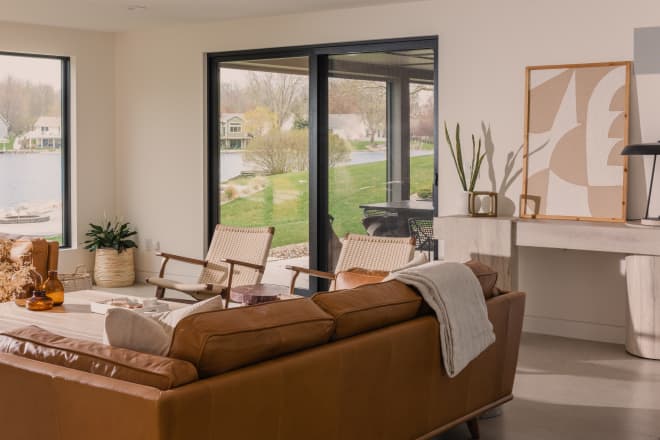Before you buy, here’s how to compare home insurance
Comparing home insurance quotes is key to getting the right coverage at a good rate. We asked an expert what to look for when shopping around. The post Before you buy, here’s how to compare home insurance appeared first on MoneySense.

Home insurance is important, but no one loves paying for it—especially when household budgets are tight. That’s why Canadians open their browsers and search for things like “cheap home insurance” and “how to save on home insurance.”
Any insurance professional will tell you there’s no easy answer for cheap and full coverage, as it’s really about finding the best plan for your needs. But it can be done. You have to do your homework. Shop around. Compare quotes. Luckily, there are a few hard and fast rules to keep in mind when comparing home insurance quotes.
How to compare types of home insurance policies
While you don’t need home insurance by law, as you do with car insurance, your mortgage lender or landlord will often require it. Home insurance experts will tell you that the key to getting the best plan in terms of cost and coverage is to shop around and compare policy offerings from company to company. In your search, these are the main kinds of coverage you’ll come across:
Comprehensive: This is the most inclusive type of policy, covering sudden and accidental occurrences involving buildings and personal property, as well as liability. You would be covered for everything, except for the exclusions specified in your policy.
Broad: Considered a middle-tier offering between basic and comprehensive coverage, broad policies come with comprehensive coverage on certain items, such as the building, but also with more exclusions for your home’s contents.
Basic: Also called “named perils,” these policies cover only the basic perils that are named in the policy, such as fire, wind and theft. They are more affordable than broad and comprehensive options.
No frills: This type of policy offers the least amount of coverage and is designed for homes that don’t meet normal standards for insurability. For example, if your home has structural problems, you may need this type of insurance until you make the necessary fixes and can qualify for a different type of coverage.
And, if you own a rental property, you should also look into landlord insurance to protect against damage and accidents involving tenants or their guests.
How to compare home insurance quotes
Considering all policies aren’t the same, getting an accurate comparison between providers can be tricky. Tara Laidman, vice-president of property & casualty business operations at The Co-operators, says common differences to watch for include the specific perils covered, the limitations on big-ticket items such as jewellery, and the additional coverages included in the policy, like identity fraud.
Tips for comparison shopping for home insurance policies
- Provide consistent information to each insurance company. This will make comparing quotes easier. Be truthful and don’t omit information—Laidman warns that this could lead to a claim denial for misrepresentation.
- Asking for the same type of policy and coverage amount (see above). Discuss with your insurance broker or provider what is and what isn’t covered in the proposed policy. It’s imperative to know this in advance, so there are no surprises (or denials) if and when you make a claim.
- Pay attention to limits on the building and your personal property (such as jewellery and electronics), detached structures and additional living expenses, adds Laidman.
What else affects the cost of home insurance?
When comparing home insurance quotes, you should consider a number of additional factors, including replacement cost or actual cash value (ACV) coverage.
Replacement cost insurance
With replacement cost insurance, your claim covers the lesser cost of restoring items to their original condition or buying new items of similar quality; there’s no deduction for depreciation. In other words, if your four-year-old TV is stolen, the claims payment will be equivalent to what it would cost to buy a new TV with similar features as the one that was stolen. The payment may not be equal to what you originally paid, however, as a similar model may now be less expensive.
The pros and cons of replacement cost, according to Laidman:
Pro: Your claims payment will allow you to adequately replace your lost items.
Con: Your premium will be significantly higher.
Actual cash value insurance
With an ACV policy, your claims payment is based on the cost of buying items in similar condition to the ones you’ve lost, factoring in depreciation. So, if your six-year-old washing machine is damaged in a fire, your insurance company will determine the current value of that same machine in its used condition and pay you that amount.
The pros and cons of ACV, according to Laidman:
Pro: You’re likely to be charged a lower premium.
Con: You’ll be on the hook for the difference between the insurance payout and the cost of a brand-new item.
Other factors that affect the cost of home insurance
When comparing home insurance quotes, know that there are a lot of factors that affect the cost, no matter what company you choose. Some of the most important considerations include:
- The age, size and location of your home
- The type of residence and the materials used in construction
- Your claims history
- The state and age of your roof, wiring, plumbing and heating system
- The proximity of fire halls and fire hydrants
- The proximity of potential hazards, such as forests (in regions where wildfires are common) and bodies of water (which increase the potential for flooding)
- The total cost of rebuilding your home
The goal of comparison shopping: Save on home insurance in Canada
It’s likely you can get a better deal on home insurance while still maintaining the level of coverage you need. We asked Laidman for tips on how to save. Here’s what she had to say:
- Update, upgrade, maintain and replace: Keep up with the general maintenance of your home and replace old features, such as electrical wiring and plumbing, and ask your insurer for discounts. If you need to, upgrade the roof with steel and replace wood or propane heating with a furnace or in-floor radiant heating, which carry less risk.
- Install safeguards: Consider getting security with a centrally monitored alarm system for fire and theft, which can yield a discount from some home insurance providers. There are smart-home automation systems that come with leak detectors and remote water shut-offs.
- Look into rates before you buy your home: You may discover that your dream home is located in an area with higher insurance rates. Ask your broker or provider about specific risks facing certain areas and what you can do to mitigate them. You shouldn’t buy a home based on home insurance premiums, but it is good to know what kinds of risks you may be up against.
- Bundle up: Most providers offer multi-product discounts when you bundle home insurance with your car insurance. Some offer multi-line discounts for your home, cottage and/or rental properties, too.
- Update and review: Always let your insurer know when you make upgrades to the safety and security of your home, and schedule a review.
- Adjust your deductibles: Raising your deductible could help you save—big time. Laidman says: “The logic in carrying a higher deductible is simple: It’ll likely be more affordable to pay more of the cost of a minor repair than to pay a higher premium over time. Also, some insurers offer a disappearing deductible feature.”
Learn more about how to save on home insurance.
Final thoughts
There’s a lot that goes into calculating your home insurance premium, from the type of policy you want to the age and state of your home. That makes comparing home insurance policies all the more important. To effectively compare your options, start by understanding how policies are built for different needs, and always provide the same information to your insurance broker or the providers you’re considering.
Read more about home insurance:
- How much is home insurance?
- Buying home insurance in Canada: A beginner’s guide
- How to get lower home insurance
- What happens when you need additional contents insurance?
What does the * mean?
Affiliate (monetized) links can sometimes result in a payment to MoneySense (owned by Ratehub Inc.), which helps our website stay free to our users. If a link has an asterisk (*) or is labelled as “Featured,” it is an affiliate link. If a link is labelled as “Sponsored,” it is a paid placement, which may or may not have an affiliate link. Our editorial content will never be influenced by these links. We are committed to looking at all available products in the market. Where a product ranks in our article, and whether or not it’s included in the first place, is never driven by compensation. For more details, read our MoneySense Monetization policy.
The post Before you buy, here’s how to compare home insurance appeared first on MoneySense.



















![[DEALS] The 2025 Ultimate GenAI Masterclass Bundle (87% off) & Other Deals Up To 98% Off – Offers End Soon!](https://www.javacodegeeks.com/wp-content/uploads/2012/12/jcg-logo.jpg)



-Olekcii_Mach_Alamy.jpg?width=1280&auto=webp&quality=80&disable=upscale#)























![Air Traffic Controller Claps Back At United CEO Scott Kirby: ‘You’re The Problem At Newark’ [Roundup]](https://viewfromthewing.com/wp-content/uploads/2025/05/scott-kirby-on-stage.jpg?#)































